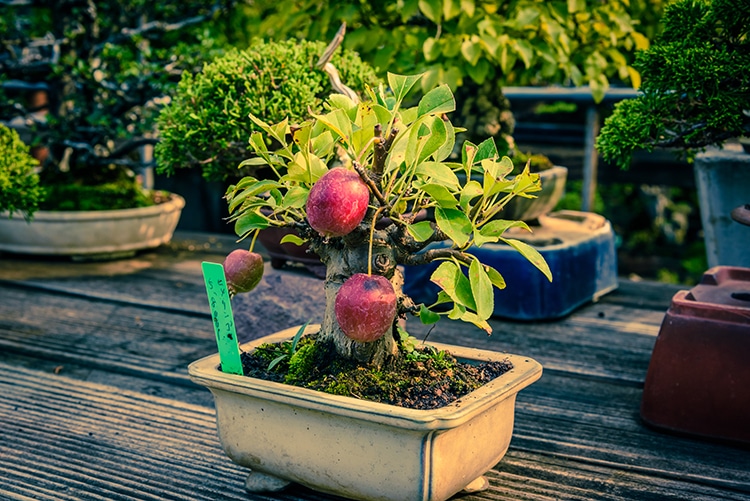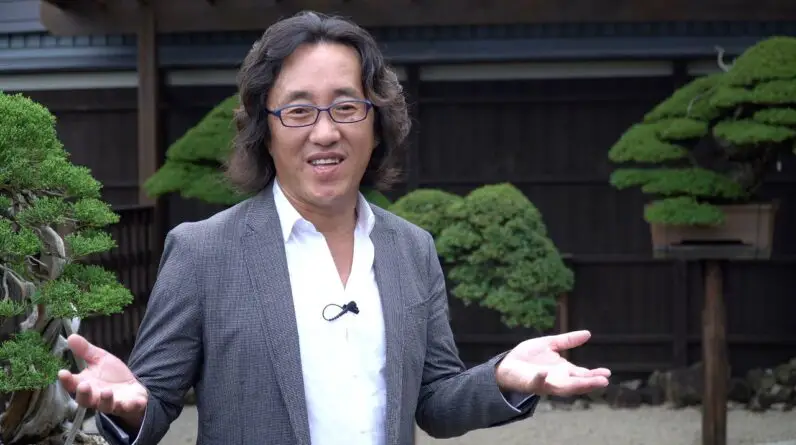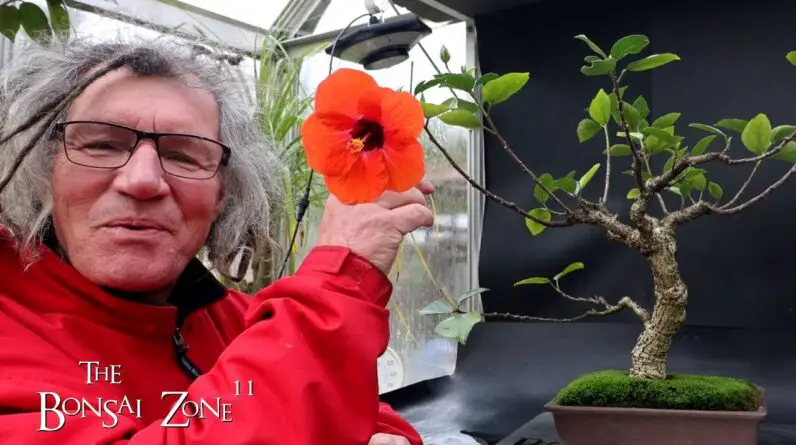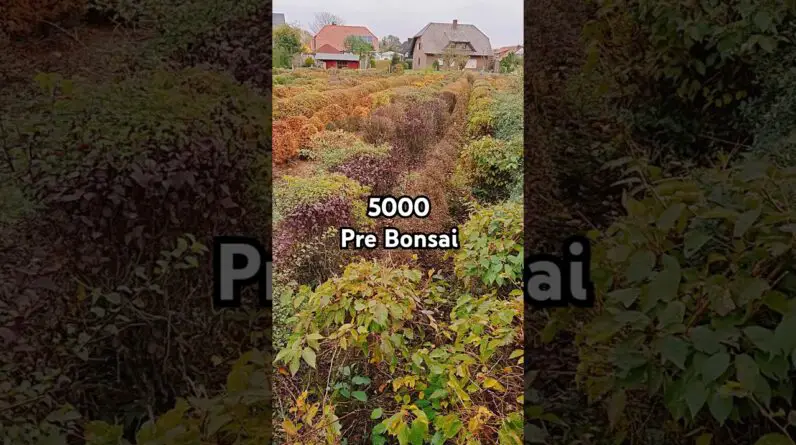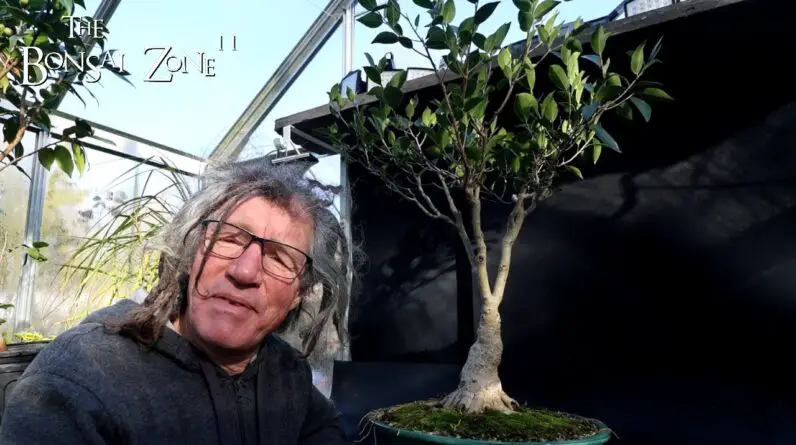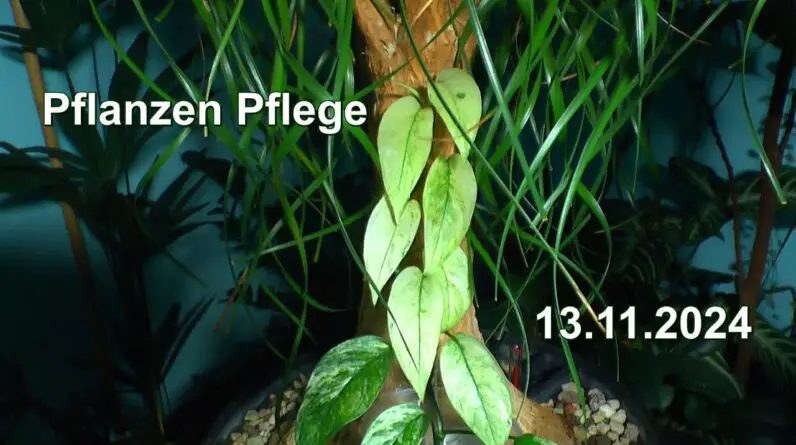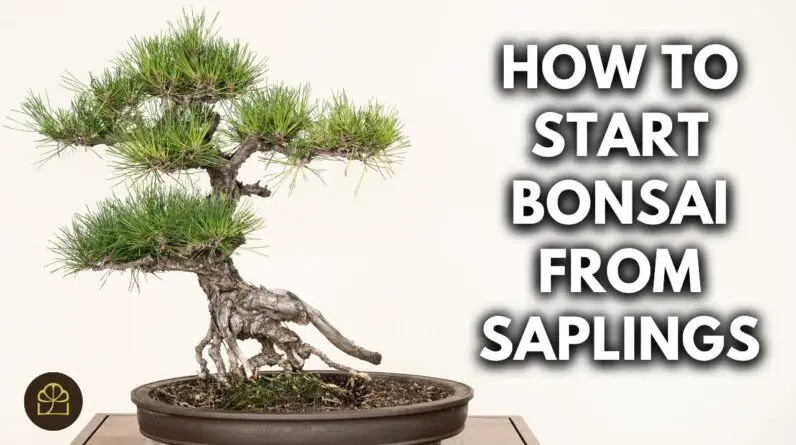If you’ve ever dreamed of having your very own mini apple tree, then growing a mini apple bonsai tree at home is the perfect project for you! With its tiny, beautiful blossoms and miniature fruit, this Japanese art form is sure to bring joy and tranquility to any space.
Using seeds from a crabapple or a dwarf apple tree, you can create your own little tree that will grow and flourish right in your own backyard or even indoors. By following the principles of bonsai horticulture and practicing regular pruning, you’ll be amazed at how your little apple tree will transform into a stunning work of art.
Say goodbye to traditional houseplants and hello to your own mini apple bonsai tree!
1. Choosing the Right Apple Variety
When it comes to growing an apple bonsai tree at home, choosing the right apple variety is essential. There are two main types of apple varieties that are suitable for bonsai: miniature apple varieties and crabapple varieties.
1.1 Miniature Apple Varieties
Miniature apple varieties are specifically bred to produce small-sized apples, perfect for bonsai enthusiasts. These trees typically reach a height of around 2 feet, making them ideal for indoor cultivation. Some popular miniature apple varieties include the “Little Star,” “Starlite,” and “Starcrimson.”
1.2 Crabapple Varieties
Crabapple varieties are known for their beautiful blossoms and small-sized fruit. These trees can be challenging to maintain as bonsai due to their vigorous growth, but they can result in stunning and unique creations. Some common crabapple varieties include the “Indian Magic,” “Prairifire,” and “Sargent.”
2. Collecting or Buying Seeds
Now that you have chosen the apple variety, you will need to obtain the seeds. There are two ways to do this: collecting seeds from fresh apples or buying apple tree seeds.
2.1 Collecting Seeds from Fresh Apples
To collect seeds from fresh apples, you will need to select ripe, healthy fruit. Cut open the apple and remove the seeds. Rinse them in water to remove any pulp. It is important to note that the seeds collected this way may not produce exact replicas of the parent tree, as apple trees are typically grafted to maintain the desired characteristics.
2.2 Buying Apple Tree Seeds
If you prefer a more predictable outcome, you can purchase apple tree seeds from nurseries or online. Ensure that you choose a reputable source to ensure the quality of the seeds.

3. Preparing the Seeds for Planting
Before planting the apple seeds, it is crucial to prepare them properly to maximize their chances of germination and growth. There are two common methods for preparing apple seeds: cold stratification and soaking.
3.1 Cold Stratification
Cold stratification is a process that mimics the natural winter conditions required for apple seeds to germinate. To cold stratify the seeds, place them in a damp paper towel or peat moss inside a sealable plastic bag. Store the bag in the refrigerator for 4-8 weeks, ensuring the temperature remains between 33-41°F (0.5-5°C).
3.2 Soaking the Seeds
Alternatively, you can soak the apple seeds in a container of room temperature water for 24-48 hours before planting them. This process helps soften the seed coat and encourages germination.
4. Choosing the Right Container
Selecting an appropriate container is crucial for the successful growth of your apple bonsai tree. Consider the following options when choosing the right container:
4.1 Bonsai Pots
Traditionally, bonsai trees are planted in shallow bonsai pots. These pots provide proper drainage and allow for the tree’s root system to be trained and pruned efficiently. Ensure that the pot has drainage holes at the bottom to prevent waterlogging.
4.2 Container Size
The size of the container will depend on the desired size of your bonsai tree. For miniature apple varieties, a smaller container is suitable, while crabapple bonsai trees may require slightly larger containers to accommodate their growth.
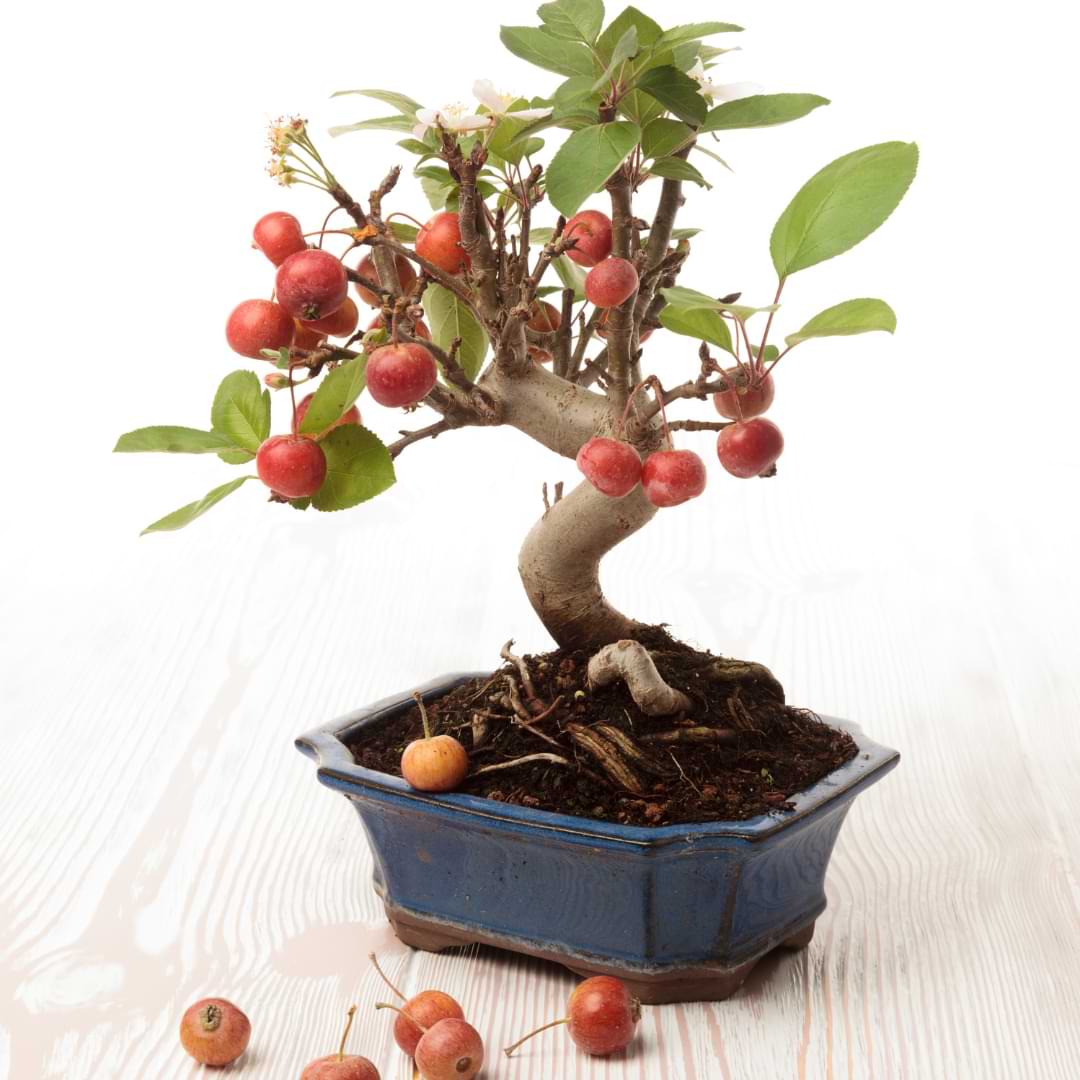
5. Planting the Seeds
Once you have prepared the apple seeds and chosen the right container, it’s time to plant the seeds. Pay attention to the following aspects of planting:
5.1 Seedling Mix
Use a well-draining seedling mix to ensure a healthy growing environment for your apple bonsai seedlings. A mixture of peat moss, perlite, and vermiculite works well. Fill the container with the seedling mix, leaving some space at the top for watering.
5.2 Planting Depth
Plant the apple seeds in the seedling mix, ensuring they are placed at a depth of approximately 0.5-1 inch. Gently cover the seeds with the mix and lightly press it down. Avoid burying the seeds too deep, as this may hinder germination.
6. Providing the Right Growing Conditions
To ensure the proper growth and development of your apple bonsai tree, it is important to provide the right growing conditions. Consider the following factors:
6.1 Temperature
Apple trees thrive in moderate temperatures ranging from 60-75°F (15-24°C). Maintain a consistent temperature within this range to support healthy growth.
6.2 Light Requirements
Apple bonsai trees require full sun exposure for at least 6-8 hours a day. Place your bonsai tree near a window that receives ample sunlight. If necessary, supplement natural light with fluorescent or LED grow lights.
6.3 Humidity
Maintaining adequate humidity levels is crucial for apple bonsai trees, especially during the dry winter months. Place a tray filled with water near the bonsai tree to increase humidity or use a humidifier in the room.
6.4 Watering
Apple bonsai trees require regular watering to prevent the soil from drying out. Check the moisture level of the soil regularly and water when the top inch feels dry. Avoid overwatering, as it can lead to root rot.
6.5 Fertilizing
Fertilize your apple bonsai tree during the growing season, typically from spring to summer. Use a balanced liquid fertilizer diluted to half the recommended strength. Apply the fertilizer every 2-4 weeks to provide essential nutrients.
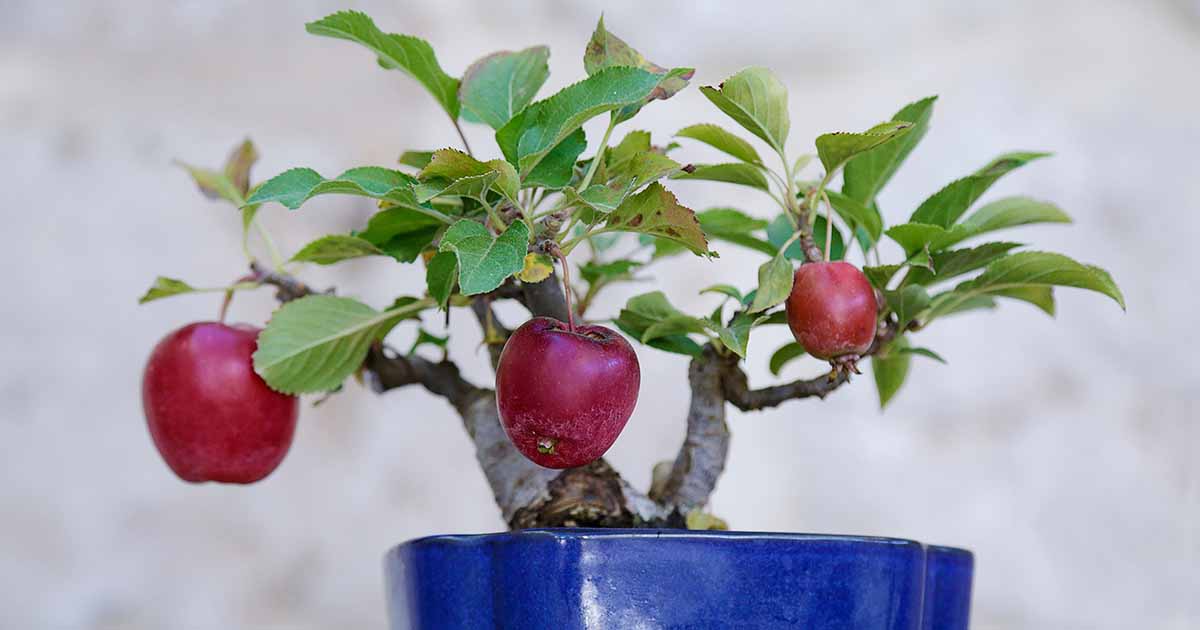
7. Pruning and Training the Bonsai
Pruning and training are essential aspects of bonsai cultivation, allowing you to shape and maintain the desired form of your apple bonsai tree. Consider the following techniques:
7.1 Pruning Techniques
Use sharp, clean bonsai pruning shears to remove any dead, damaged, or unwanted branches. Prune the branches to maintain the desired shape and size of your apple bonsai tree. Regular pruning encourages new growth and keeps the tree healthy.
7.2 Wiring and Shaping
Wiring is a technique used to bend and shape branches, creating the desired bonsai form. Use aluminum or copper wire wrapped gently around branches to guide their growth. Be careful not to wire too tightly to avoid damaging the branches.
7.3 Leaf Pinching
Leaf pinching is a technique used to control the growth of your apple bonsai tree. Pinch off the terminal bud of a branch, promoting bushier growth and improving ramification. This technique helps create a fuller appearance.
7.4 Regular Maintenance
Maintaining the overall health and appearance of your apple bonsai tree requires regular maintenance. This includes removing weeds, inspecting for pests and diseases, and ensuring proper watering and fertilization. Regularly check the tree’s wiring and adjust it as necessary.
8. Protecting the Bonsai from Pests and Diseases
Like any plant, apple bonsai trees can be susceptible to pests and diseases. To protect your bonsai tree, consider the following measures:
8.1 Common Pests
Common pests that can attack apple bonsai trees include aphids, spider mites, and scale insects. Inspect your tree regularly for signs of infestation, such as distorted leaves, webbing, or sticky residue on the branches.
8.2 Preventive Measures
To prevent pests, ensure you provide proper growing conditions. Healthy bonsai trees are less likely to attract pests. Additionally, avoid overwatering and maintain good air circulation around the tree.
8.3 Natural Remedies
If pests are present, consider using natural remedies such as neem oil or insecticidal soap. These eco-friendly options are effective in controlling common bonsai pests. Follow the instructions on the product label for proper application.
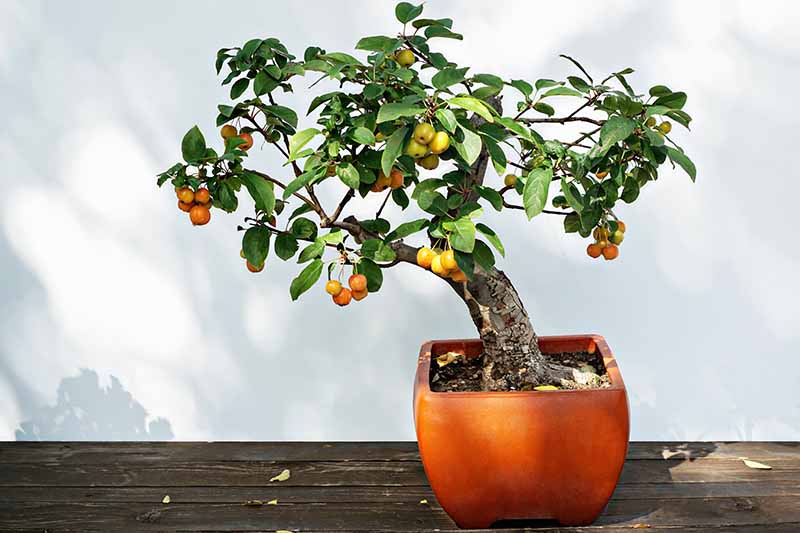
9. Repotting the Bonsai
As your apple bonsai tree grows, it may outgrow its current container. Repotting is necessary to accommodate the expanding root system. Consider the following aspects when repotting:
9.1 Signs of Overgrowth
Look for signs of overgrowth, such as roots growing out of the drainage holes or the tree becoming unstable in the pot. When the tree shows these signs or every 2-3 years, it is time to repot.
9.2 Choosing the Right Time
The best time to repot your apple bonsai tree is in early spring, just before the growing season begins. This allows the tree to recover quickly and establish new roots.
9.3 Repotting Process
Carefully remove the tree from its current container, being mindful not to damage the roots. Trim any excessively long roots and prune the top foliage if necessary. Place the tree in the new container with fresh bonsai soil, ensuring proper drainage. Water thoroughly after repotting to settle the soil.
10. Enjoying the Fruits of Your Efforts
After patiently tending to your apple bonsai tree, you can finally enjoy the fruits of your efforts. Consider the following aspects when it comes to enjoying your bonsai tree:
10.1 Harvesting the Mini Apples
For miniature apple varieties, you can look forward to a delightful harvest of tiny apples. Once the apples are ripe, gently pluck them from the tree. They can be enjoyed as miniature fruits or used for decorative purposes.
10.2 Caring for the Bonsai Tree
Continue to provide the necessary care for your apple bonsai tree, ensuring proper watering, fertilization, and pruning. Regularly assess the tree’s health and address any issues promptly. With proper care, your apple bonsai tree will thrive and bring beauty to your home.
Growing an apple bonsai tree can be a rewarding and enjoyable experience. By following these guidelines and investing time and effort into caring for your bonsai, you can create a stunning miniature version of this beloved fruit tree right in your own home. So gather your materials, choose the apple variety that speaks to you, and start growing your very own apple bonsai tree today!
